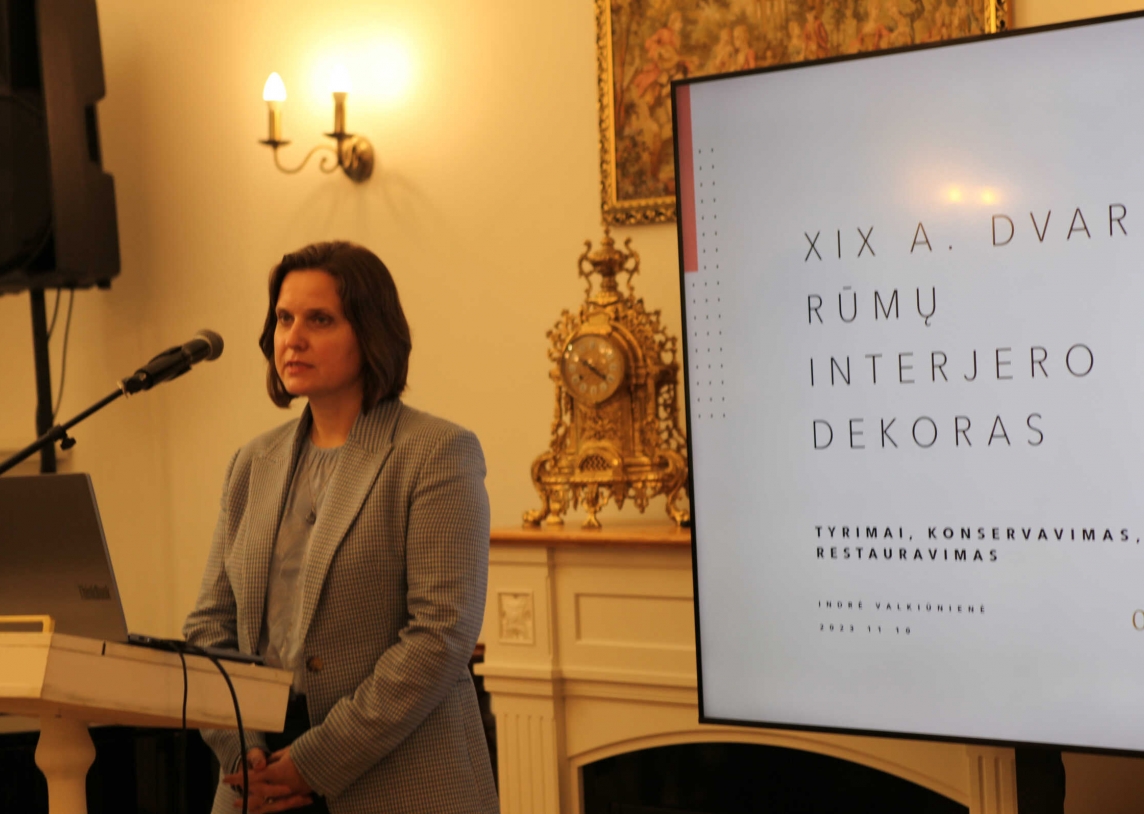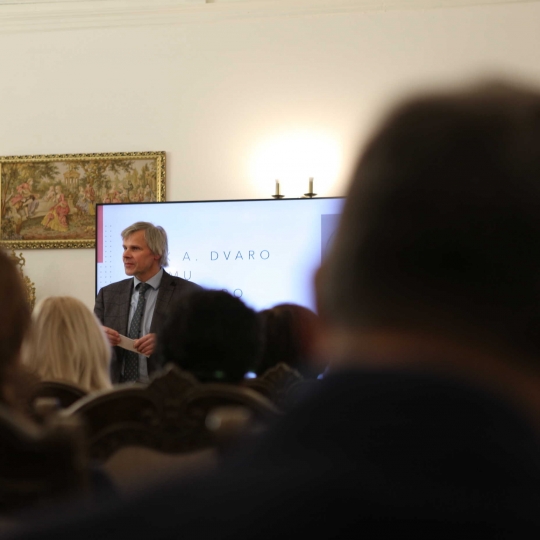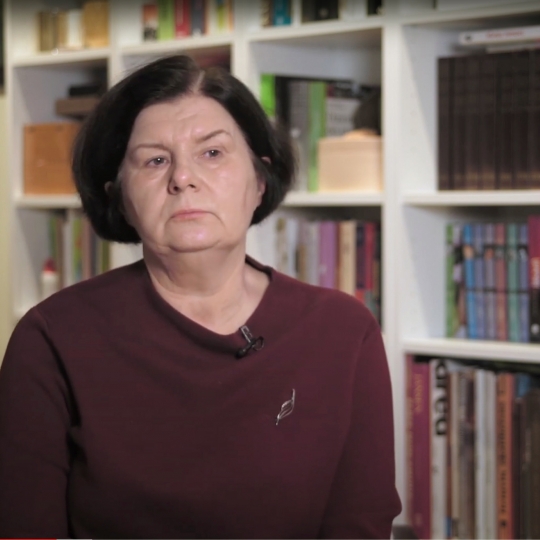Articles
Craftsmanship in Manors: to Know to Preserve
2024 01 05Heritage sites of Lithuanian manors can boast of a vast collection of architectural and art treasures, landscapes and old technologies. To preserve this heritage, it is important to get to know and understand it as well as possible, and to keep sharing best practices, learning and applying the latest discoveries.
For centuries, the wisdom, knowledge, techniques, skills and technologies of contemporaries were used to build manor houses. By seeking inspiration from the creators of cultural heritage, we can continue to preserve and promote our manors in a responsible way. And by using both the wisdom of the past and modern innovation, we are preserving the authenticity of heritage sites for future generations.
The theme of Craftsmanship in Manors includes the old wisdom of creators as well as the knowledge of contemporaries, the old techniques and the latest technologies for preserving and restoring the heritage. On 10 November 2023, professionals, researchers and heritage enthusiasts gathered at Kuršėnai Manor for the conference 'Craftsmanship in Manors' to share their expertise, best practices and a wealth of examples.
''Perhaps my aim is to introduce you to the nuances, peculiarities and discoveries that we have made in my field—the restoration of murals—over the years, which we are happy to share.
In the 19th century, wallpaper was particularly popular in manor houses. We often come across paper upholstery. Very little of it has remained. You can find fragments that can be used to reconstruct the print, to see what the wallpaper looked like... You can discover the colour elements that have survived on the walls, the periods, the remnants of murals or murals that have stood the test of time.
After the polychromy testing, you must decide on your approach to restoration: from the conservation of only some small fragments, as decorative elements are often repetitive, (there may be some photos found and preserved) to the restoration of the full, possibly reproducible, décor.
It is very important that people who manage properties, historic buildings and heritage sites understand how to accomplish a certain goal step by step."
Craftsman and artisan Saulius Jackevičius: aged lime, traditional plasters, paint and décor in manor houses
"Every manor house is authentic. You have to recommend and use materials or certain techniques that were used back in the day.
Lime is the founding material of our entire civilisation, from the buildings of classical antiquity to our manor houses. This material allows buildings to remain beautiful, strong and durable for a long time.
I believe this conference is important for this large audience of both specialists and manor owners. And it was an honour to give you a presentation on the history of lime, how it is born, how it is made and how to use it correctly.
This knowledge is crucial for the restoration of manors and other historic buildings. These are just the basics, without which restoration and renewal are impossible.''
Čiulai manor house of wooden architecture – in the restoration process
"When it comes to the restoration of a wooden manor house, one of the things everybody is interested in is the fact that the house needs to be lifted up to take out the old rotten timbers and replace them with new ones. Only then you can dig up the foundations and try to reinforce them.
Every element of the manor house, whether it is doors, windows or furnaces, needs people with very particular skills."
According to Dr Dalė Puodžiukienė, a researcher of manors and architectural historian, manor houses have played a key role in the history of Lithuania and craftsmanship.
"Manor houses have played a significant role in history of Lithuania for almost 500 years.
Since the 15th century, when a manor house emerged as a unit as we know it. Manors always had carpenters who built wooden buildings. We know that in Lithuania wooden architecture dominated until the middle of the 20th century, almost up to the present day, up to 1940.
Wooden structures were also predominant in manors, estates of the large and medium-sized nobility until the end of the 18th century. Later, with the rise of classicism, they started to build brick buildings. However, all the furniture, flooring, and roofing were made of wood, with bricks only being used for walls. So, a carpenter was the main craftsman who created the architecture of Lithuanian manors in large estates until the 18th century, and in small ones until the beginning of the 20th century, until World War I.
But it all started even earlier than the 15th century, when manor houses were first built. The experience was drawn from those old medieval noble homesteads. Researcher Daugutis believes that the main building types originated in the 10th and 11th centuries.
Wooden architecture in manor houses was particularly elaborate in the late 16th and early 17th centuries, when wooden structures were built by kings and noblemen. Back then, a carpenter was one of the main craftsmen, even on a par with an architect.
In the First Statute, the word architect was translated from Latin to Old Ruthenian as carpenter. There was a very clear hierarchical system and diversity among carpenters. They had their own private villages before turning into hired labourers in the 18th century. However, this private practice of carpentry also persisted for quite a long time, and there is evidence that, for example, in the mid-19th century, landlords exempted their carpenters from serfdom even before the peasant reform. They allotted carpenters land to prevent them from being taken as recruits.
So, a carpenter was one of the main craftsmen who created our architecture, and most importantly, this craft was passed down from generation to generation. The father was passing on to his son his skills and the essential qualities of ethnic architecture: proportion, a sense of moderation. The architecture of manor houses – this is what distinguished Lithuanian wooden architecture from the wooden architecture of other countries.''
President of the Lithuanian Castles and Manors Association Gintaras Karosas: about the importance of sharing knowledge and discoveries
"Events such as this one held at Kuršėnai Manor are truly valuable. We also gain new knowledge and experience by encouraging and empowering each other.
The path that we are taking together in preserving the heritage of manors is the right one, the one that our society needs and the one that our country needs.''
The project 'Craftsmanship in Manors: to Know to Preserve' contributes to the knowledge of cultural heritage, public awareness, admiration and desire to preserve it. The project is co-funded by the Department of Cultural Heritage under the Ministry of Culture.






